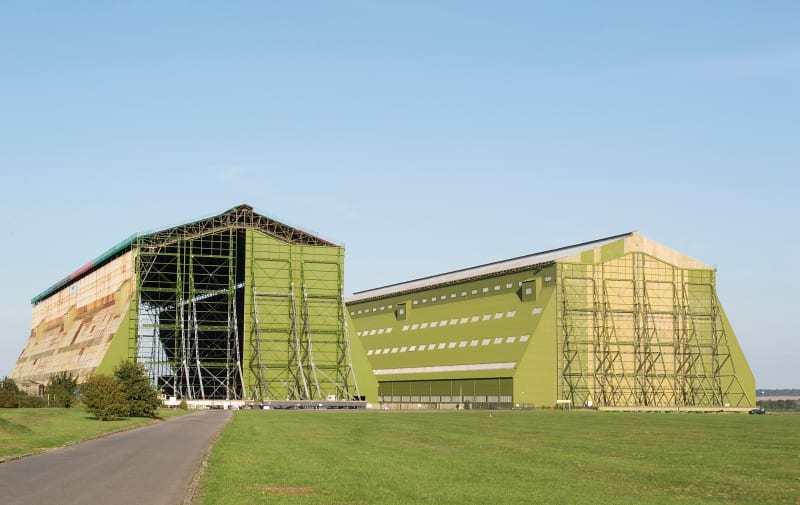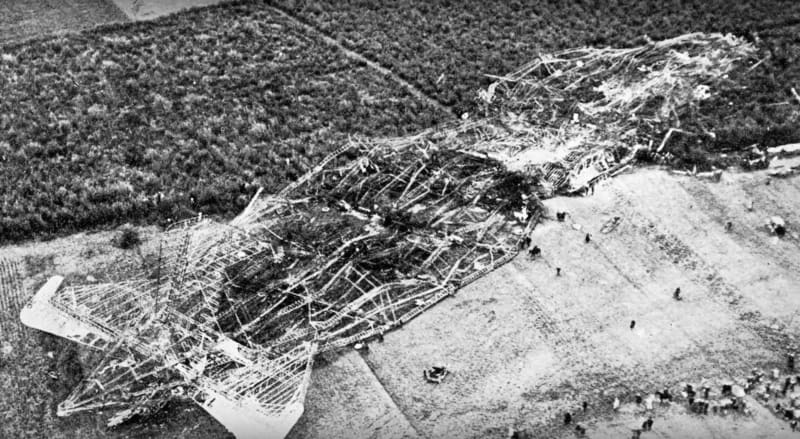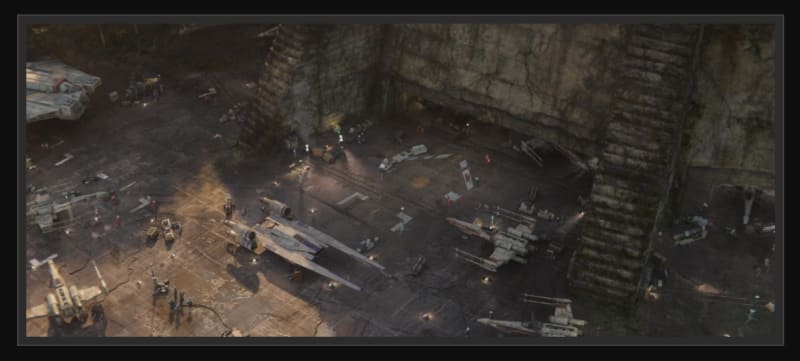Cathedrals for airships

Some of the world’s largest buildings by volume are used for the construction and shelter of aircraft and spacecraft. The biggest of all is the Boeing Everett Factory in Washington State, originally used for making the company’s 747 airliner. Only slightly further down the list are several hangars remaining from the programmes to develop airships in the USA, Germany and Britain in the early 20th century.
In the flat landscape of Bedfordshire in England are two featureless khaki-painted sheds whose size it is difficult to gauge from a distance. Only when one gets up close can one see that they are absolutely gigantic: nearly 250 metres long and 50 metres high, as tall as 15-storey office buildings. (In the photo, the black dot next to the building at extreme right is a car). These are Shed 1 and Shed 2 of the former Royal Airship Works at RAF Cardington. The entire ends of the sheds had to open to allow the craft to pass. This was achieved with doors that are huge free-standing structures in their own right, like greatly magnified cricket screens, heavily buttressed, and running sideways on rails.
The firm of Short Brothers began building airships for the Admiralty in Shed 1 in 1915. The Royal Works was established in 1919, and Shed 2, previously in Norfolk, was dismantled and re-erected on the site. In the late 1920s Britain’s largest airships, the R100 and the R101, were built at Cardington. The buoyancy bags of the ships were filled with (highly flammable) hydrogen, made in the Works’ own Gas Factory. The plan was for the craft to ply long-distance routes across the British Empire. On 5th October 1930 the R101 set out on its maiden voyage carrying 54 passengers and crew. It crashed and burned in northern France, killing 48 including the Air Minister Lord Thomson and many of the ship’s designers . This disaster ended the building of airships in Britain for the next fifty years.

During the 1980s the Airship Industries company operated from Cardington, but eventually failed. Today Hybrid Air Vehicles are building the Airlander 10, a machine that is something between an airship and an aeroplane. The company sees markets in surveillance, coastguard work, and luxury vacation travel. These new airships are lifted not with hydrogen but with the inert gas helium.
In between these two phases of airship production at Cardington, the Sheds have been put to a great variety of other uses. They are big enough to have substantial buildings erected inside them. From 1971 the Building Research Establishment used Shed 2 for experiments with gas explosions and the testing of steel, concrete and wooden buildings to destruction. For the Cardington Steel Framed Building Fire Tests, the Fire Research Station constructed an eight-storey building , set parts of it on fire, and carefully monitored the effects.

The sheds have been used for flying model aircraft and as rehearsal spaces for musicians, simulating the conditions of arena concerts. They have also served as film studios with sets built inside the Sheds, or as film locations in their own right. Of these the most recent and most widely viewed has been the use of Shed 1 as the Rebel Base on the jungle moon of Yavin 4 in the original *Star Wars *of 1977, and in another Star Wars story *Rogue One *in 2016. Fantasy starfighter ships litter the floor where real military and civil flying machines were once assembled.

Bill Hammack, Fatal Flight: The True Story of Britain’s Last Great Airship, Articulate Noise Books, 2016
Building Research Establishment, BRE Cardington Steel Framed Building Fire Tests, BRE Watford n.d.: www.bregroup.com/wp-contents/uploads/2017/01/BRE-Cardington-Steel-Framed-Building-Fire-Tests-SM.pdf